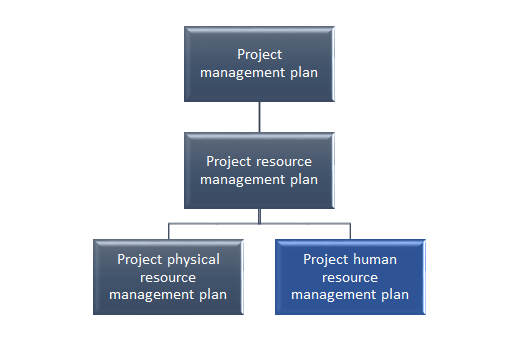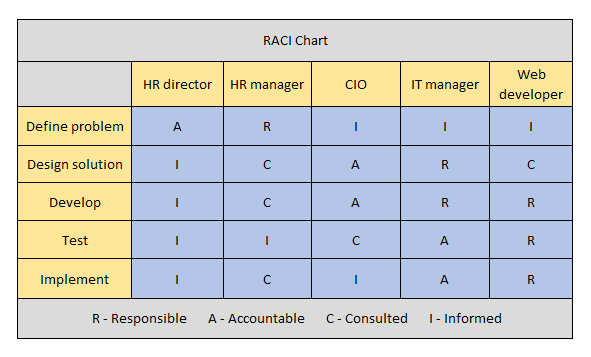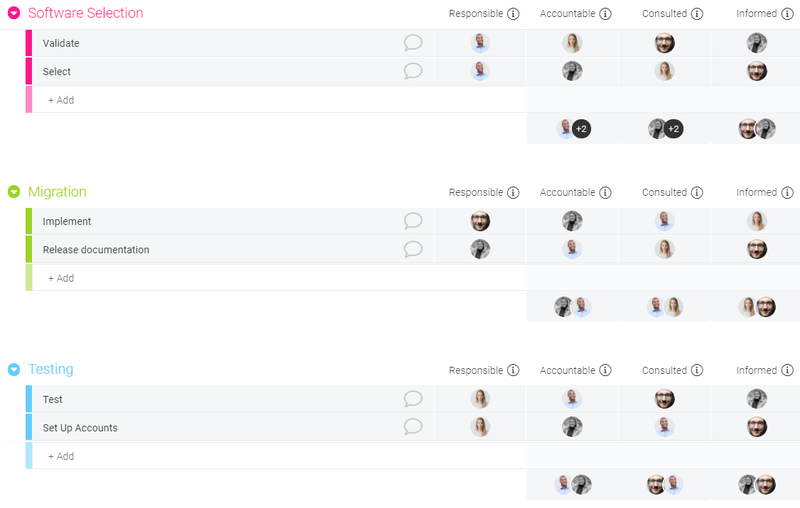Clinical Project Manager Resource Solutions Domain_9
Special projects can give employees a chance to step out of their customary roles, work with new people, and take ownership of their work. Yet without managing human resources, project teams can founder, taking critical projects down with them.
Project human resource management, also called project team management, ensures that project teams have the time, skills, resources, and direction they need to meet project goals. Find out how to use project human resource management to ensure success with every project.
Overview: What is project human resource management?
Project human resource (HR) management is an element of project management concerned with organizing, managing, and leading a project team. The team includes everyone who has assigned roles and responsibilities for completing the project.
Project teams present unique opportunities and challenges because they bring staff from different functional areas together in new roles and relationships. An employee with no supervisory experience might lead a project phase, assuming authority over more senior employees.
A subject-matter expert might have the opportunity to weigh in on strategy and budget decisions. With proper management, these new team dynamics can provide development opportunities and enhance project results.
HR project management is a component of project resource management, which is itself part of an overall project management plan. In the world of project planning, project HR management lives here:

Project HR management is part of an overall project management plan.
The project human resource management plan, sometimes called the team management plan, contains four steps:
- Plan human resource management: In this phase, the project manager (PM) identifies the roles and responsibilities needed to fulfill the project goals. From this, the manager drafts a team structure and staffing plan.
- Acquire the project team: The project manager chooses staff members to fill the various roles and ensures their availability and willingness to serve on the project team.
- Develop team members: This includes team building, skills development, and other efforts to enhance the team's performance.
- Manage the team: The project manager tracks performance, offers feedback, resolves conflicts, and eliminates roadblocks to optimize performance.
These steps are explained in greater detail below.
How to develop a human resource management plan
Let's take a look at the components of a formal team management plan and how to create one.
1. Introduce the plan
A formal HR management plan includes an introduction explaining the purpose of the plan, what it includes, and how the team can use it to inform its decision-making process and keep the project on track.
2. Assign roles and responsibilities
Setting clear roles and responsibilities is critical to a successful project. To do that, you need to assess the skills and staff power needed to complete each project activity and create a structure for the resulting team.
Team members typically fall into these categories:
- Project manager: Manages all aspects of the project from planning to execution and is ultimately responsible for its success or failure.
- Project sponsor: Authorizes and funds the project, advocates for it, approves changes, and formally accepts deliverables.
- Stakeholders: Validate the project scope and deliverables and actively participate in project management.
- Line managers: Participate in planning, provide resources and staff, and manage activities within their project area.
- Team members: Contribute work or expertise directly to the project.
For each team member, the project manager assigns a role based on the team member's competency, responsibility, and authority over the project.
These roles and responsibilities may be illustrated by a traditional organizational chart; a simple text document; a responsibility assignment matrix (RAM); or a combination of the three.
One common type of RAM is a matrix showing who is responsible, accountable, consulted, or informed (RACI) for each aspect of the project. To create a RACI matrix, list all team members and project tasks on a chart. For each box in the chart, indicate the team member's role as follows:
- Responsible: Does the work.
- Accountable: Owns the work. There should be only one accountable person for every task in the matrix.
- Consulted: Is consulted as needed as the work is performed.
- Informed: Is kept in the loop throughout the task.
Here's a sample RACI matrix for a project to develop new hiring software functionality.

A RACI chart shows the responsibilities of team members for aspects of the project.
If you need help getting started with your plan, there's no need to go it alone. Project management software such as monday.com can automate many of these tasks for you.
With colorful visuals, automated notifications, and boards for just about every project cycle management function you can think of, monday keeps all team members on track throughout the project.
3. Write a staffing management plan
This phase of the planning ensures that everyone you're depending on to keep your project moving is available and prepared to do the work when the time comes. You need to spell out all aspects of staffing the project, including:
- How and when staff members will be acquired
- Time requirements for each team member throughout the project
- How and when skills will be developed as needed
- How performance reviews will be conducted
- How results will be recognized and rewarded
- How and when team members will be released from the project
- Safety and compliance needs created by the project
HR software can make this phase of project planning easier by providing reports showing time and attendance, training, staff qualifications, capacity, and other key HR responsibilities.

monday.com makes project management tasks — such as RACI charting — seamless.
Source: monday.com.
4. Training and development
In addition to skills training, a project manager needs to consider ways to onboard project team members and get them working productively together. This might include an orientation to the project or team-building exercises to introduce team members who might be working together for the first time.
Some team members may require training to use productivity tools and other technology for the project. As the project progresses, the project manager may need to provide individual coaching, dispute resolution, and feedback to keep everyone working effectively for the good of the team.
5. Rewards and recognition
Employees often have to step out of their comfort zones or put in extra effort to keep a project on track. Officially recognizing their efforts and accomplishments can keep the team motivated and provide a record of their performance to carry into future assignments.
Support team success
Somewhere in the universe of all possible projects, there are teams that hit it off immediately, divide the work effortlessly, and drive their projects over the finish line with little direction or support.
I've never really been on a team like that, but I'd like to think they're out there somewhere, knocking out deliverables and trading high fives. For the rest of us, project HR management is key to turning a group of individuals into a high-performing team ready to deliver a successful project.
Clinical Project Manager Resource Solutions Domain_9
Source: https://www.fool.com/the-blueprint/project-human-resource-management/
0 Response to "Clinical Project Manager Resource Solutions Domain_9"
Post a Comment